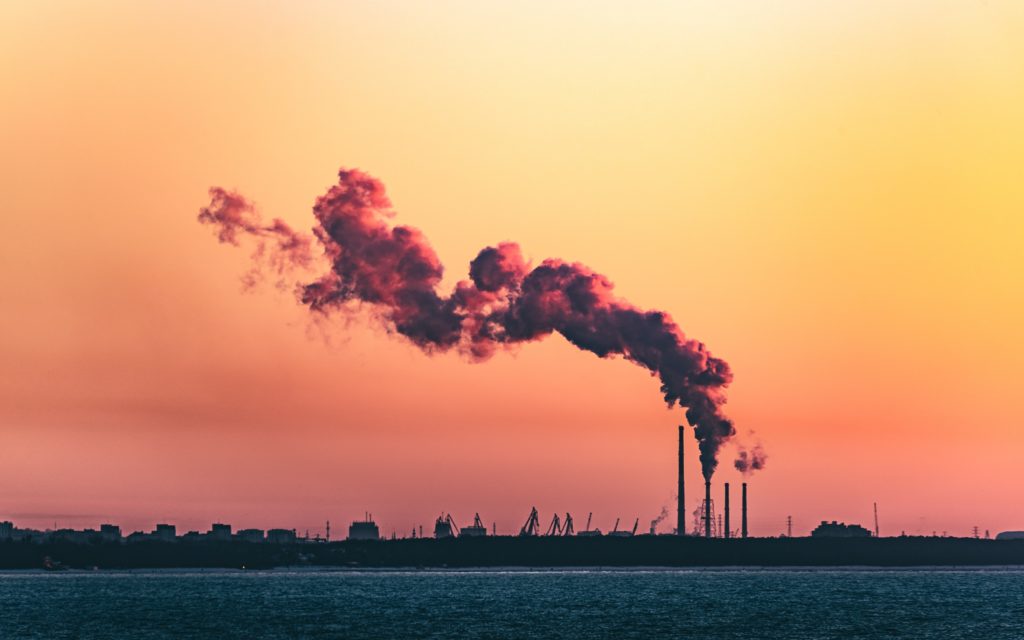Climate News Weekly Episode 127
November 20, 2023
US-China Climate Statement, More Lithium, Fifth National Climate Assessment, Taylor Swift, and more
In this Episode
On this week’s episode of Climate News Weekly, James Lawler is joined by Julio Friedmann and Darren Hau as they discuss the latest US-China climate statement ahead of COP28, new developments in the EV space, the US’s Fifth National Climate Assessment, the impact of climate change on Taylor Swift concerts, and more.
Related Media:


Climate Now: Dec 23, 2021
The sustainability conundrum of electric vehicles: Making and recycling EV batteries, with Andy Stevenson
Climate Now is kicking off our Decarbonizing Transportation series by addressing a question that looms over the electric vehicle market: how can we sustainably manufacture and recycle EV batteries? To learn about electric vehicle battery trends and challenges,


Climate Now: Jun 7, 2021
Climate Projections with Sergey Paltsev
Dr. Sergey Paltsev, Deputy Director of MIT’s Joint Program on the Science and Policy of Global Change, spoke with Climate Now hosts James Lawler and Katherine Gorman about climate projections and the tools he and his colleagues at MIT use to communicate


Climate Now: Dec 13, 2021
Unpacking COP 26: Are we on track to solve the climate crisis, with Megan Darby
In November 2021, representatives from around the world gathered to update their climate commitments at the 26th United Nations Framework Convention on Climate Change (UNFCCC) Conference of the Parties (COP 26) in Glasgow, Scotland. The conference received sub


Mini Explainer Series Ep 01
Scope 1, 2, and 3 Emissions
Companies assessing their greenhouse gas emissions will need to analyze their Scope 1, Scope 2, and Scope 3 emissions. This Climate Now mini provides a brief explanation of what that means.
Episode Transcript
James Lawler: [00:00:00] Welcome to Climate News Weekly. I’m here today with Julio Friedmann and Darren Hau. Julio, Darren, great to see you both again.
Julio Friedmann: A pleasure as always. Glad to be here.
Darren Hau: Yeah, it’s great to be here.
James Lawler: So we have several interesting stories today, some national and some global. Julio, could you start us off? What piqued your interest last week?
Julio Friedmann: For me, the biggest news of the week is that the U.S. and China have cut an agreement in advance of COP 28. I’m really excited about this for two big reasons. One, this is what the COP does. The main benefit of the COP is not what the negotiation is, it’s actually that it prompts everybody to have higher ambition every year and this is a good demonstration of it.
The U. S. and China, the world’s two largest emitters by a lot, have put together an agreement. And what’s in the agreement is really good. Tripling renewables, a lot of work on efficiency, methane, non-CO2 greenhouse gases like nitrous oxides, carbon capture projects. [00:01:00] There’s a lot of stuff in here that’s really, really good.
Darren Hau: I’d love to hear, Julio, there’s a lot going on in the U.S. China relationship. Why now? What impact do you think this has for our kind of near medium-term trajectory here?
Julio Friedmann: As you said, there remains a whole lot of friction between the U.S. and China on a whole lot of things, right?
It is also the case that both countries realize they really need to work together on a great number of topics. And even when the situation has been stressed between the two countries, climate and energy were usually safe spaces. They were places where the two countries could meet and talk and try to make progress.
It is unclear whether that will help any of the other issues that the U. S. and China need to work on but the fact that they can still come together and say, look, we both know that we have large present roles, large historical roles, we control markets, we control supply chains, like we really need to work together.
It is also the case that the U.S. and China will continue to compete [00:02:00] in the market. This does not signal some retreat from business as usual either, in terms of lithium, supply chains or in terms of manufacturing of electrolyzers, like all these things are also going to be the case. But these kinds of commitments are important because both countries tend to honor these commitments.
So when they finally get to it and say, okay, yes, we’ll triple renewables with the goal of reducing fossil, like that is a commitment that both countries will take seriously.
Darren Hau: We’ll continue to be competitors, but it’s good that it’s in the spirit of hitting those commitments.
Julio Friedmann: Speaking of competition, I saw some big news this week in the EV sector, and that’s your beat, Darren. Tell us about it.
Darren Hau: Yeah, absolutely. Lots of big news last week from the EV space. First of all, I want to talk about a general trend of oil and gas majors moving into the space in a constructive way, actually. So, the first story is about ExxonMobil announcing that they are going to put in [00:03:00] a lot of investment into direct lithium extraction and produce up to about a hundred thousand tons a year.
This is part of their low carbon solutions business and this represents a really large chunk of potential production by 2030. For reference, in 2022, the world produced about 130, 000 tons. So, obviously we’re going to continue to grow production between now and 2030, but a hundred thousand tons is nothing to laugh at.
They’re going to be focusing on direct lithium extraction instead of traditional methods like brine or hard rock, uh, mining techniques. So that’ll be interesting to see. This is an earlier technology that is somewhat proven, but hasn’t really been used commercially at scale yet.
Julio Friedmann: If Exxon can drive down the cost through investment and innovation, that would be a win.
Darren Hau: Yeah. I mean, like I’ve said before, it’s always good to try to use the expertise of the people who work for these companies and they’re very good at chemical processing, so let’s use it.
The second story related to that front is actually BP buying up a [00:04:00] hundred million dollars worth of Tesla superchargers. So they struck this partnership and they will be deploying these charges across their existing real estate assets, including potentially the recent purchase of TA Petro, which is a series of truck stops across the U S. This is just very interesting because it commits them to a very significant deployment.
And I think this is good news for the industry to see more than just Tesla deploying hardware out there.
Julio Friedmann: Indeed. This all looks sound, whether it delivers emissions abatement remains to be seen.
Darren Hau: Well, we’ll see how it goes, but I think it’s a step in the right direction. One more thing I want to raise in this exciting world of EVs is, as we all probably heard several weeks ago, quite important American manufacturer of EV buses, Proterra, went bankrupt and it’s been a big question what this means for the future of bus manufacturing in the U. S.
Now, Proterra is particularly important because not only did they make the electric buses, they also had business units that sold power solutions to other companies, including trucking [00:05:00] companies. And as a matter of fact, a, I believe European based trucking company called Volta Trucks shortly thereafter went bankrupt because Proterra was their main supplier.
So there are a lot of knock-on effects from this bankruptcy. What has happened in the last week is that Volvo Battery Solutions, which is an arm of that vehicle manufacturer, Volvo, actually purchased Proterra Powered for about 210 million. So essentially that expertise will live on. It remains to be seen.
What the agreements with other OEMs will look like as a result of this but generally this is maybe not like the best outcome for the industry, but it means that the technological know-how and the supply chain will continue to hum along.
Julio Friedmann: I want to pivot a little bit and talk about a couple of big reports that came out over the past week.
Again, the conference of the parties, COP 28 is a forcing function and so a lot of people are like, let’s get the reports out now. One of those is the fifth [00:06:00] U.S. Climate Report, the National Climate Assessment. It’s required to be done every four years. This is the fifth of that series. There’s a couple of things about it that are noteworthy.
One of them is they really show in detail the climate impacts by region around the United States. So a lot of individuals just living where they live see and experience climate change. They don’t necessarily know what to make of it in a larger context. This is a way to pull that together. And so if you’re living in Minneapolis, maybe there’s no more ice fishing.
If you’re living in Phoenix, there’s these oppressive heat waves. And people are starting to see the manifestation of this, and this report does a good job describing it. It does talk about the progress that has been made over the last four years. But if you combine a lot of progress over the last four years with, holy cow, there’s real time climate impacts and we’re not making enough progress, one of the conclusions is we need to be doing more about adaptation.
We need to do more to deal with climate change as it emerges and as it [00:07:00] impacts people’s lives. Said differently, if you are just saying to people, Oh, we’re doing a good job reducing greenhouse gas emissions. If they’re like, it’s still 130 where I live, then you need to handle both of those things. Quick aside on this discussion, Taylor Swift canceled one of her concerts this weekend in Brazil because of a heat wave and actually a, this is, yes, catastrophically bad. It’s 128 degrees at the concert venue. She’s like, you know what? Let’s just wait. I wish all adaptation were that straightforward.
Darren Hau: You know, Taylor Swift’s been making her way into all sorts of Wall Street reports and if this gets people focused on climate in a really constructive way, maybe a silver lining to this.
What I liked about that report, actually, Julio, is that it seems fairly objective. It just talked about what the impacts would be and not all of them were necessarily negative. There were some bright spots, but I think the takeaway is even if there are some benefits to some of these regions, the pace of change means that there are so many things that [00:08:00] we are just not set up to handle.
Julio Friedmann: You make an excellent point here, Darren. Similarly, this week, the UN put out its annual emissions gap report. And that is always tough sledding. It is not great news. But like the fifth assessment report, it’s just the science. And the technical findings don’t go away.
According to the current estimate, we are going to see emissions grow 9 percent between now and 2030. That is different than things like the IEA’s scenarios. The IEA’s scenarios are a what if kind of thing. The UN’s emissions gap report is based on existing facilities and existing demand. They’re like, if we just have the same demand and facilities, then we’re gonna grow 9%.So, very different kind of read. And that again puts greater urgency on that.
In that context, they also call for, brace for it, a 10 to 18 times growth in the amount of money going into these sectors, which is an [00:09:00] astonishing ramp up that’s necessary. It’s hard, but that’s the work.
Darren Hau: Yeah.
Julio Friedmann: The last thing is the little nation of Colombia, from which my mother comes, has announced a 1-billion-dollar biodiversity fund and I think this is interesting because it is not climate mitigation, they’re simply saying it is worth spending money to save species It is worth spending money to save ecosystems and rainforests; so put some money into this fund. And so you could argue it’s climate adjacent, but I would actually argue it is one of the many things we need to do.
Putting money into biodiversity is a win and it’s not the same thing as putting money into carbon and that’s okay because we need to save biodiversity too. We need to save ecosystems. We need to save rainforests and we’re not going to do that unless we get some money on the table.
Darren Hau: Yeah, these are very positive developments.
So a lot of tough news this week, but a lot of good news too.
James Lawler: Thank you both for sharing your insights this week.
Julio Friedmann: Always a pleasure.
Darren Hau: Yeah, pleasure to be here.
James Lawler: And that [00:10:00] is it for this week’s episode of Climate News Weekly. We hope you’ll join us next week.
Climate Now is made possible in part by our science partners like the Livermore Lab Foundation. The Livermore Lab Foundation supports climate research and carbon cleanup initiatives at the Lawrence Livermore National Lab, which is a Department of Energy Applied Science and Research facility. More information on the foundation’s climate work can be found at livermorelabfoundation.org.